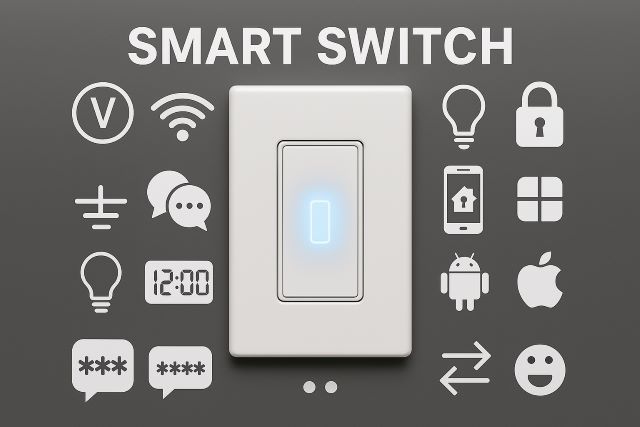Back To Articles

Smart switches are one of those home upgrades that spark curiosity but also raise plenty of questions. Are they just fancy gadgets, or do they bring real value to everyday living? According to Statista, more than 350 million households worldwide now use at least one type of smart home device, and connected lighting controls are among the fastest-growing categories. That means many people are already experimenting with these modern alternatives to traditional wall switches. But do you actually need them in your own home, or are they just nice-to-have extras? Let’s break it down.
Contents
Claim your free trials here and enjoy immersive content experiences at home.
What Does a Smart Switch Actually Do?
A smart switch replaces a regular wall switch but comes with added intelligence. Instead of only flipping on and off, it connects to your Wi-Fi network and can be controlled by smartphone apps, voice assistants, or automation routines. For example, you can:
-
Turn lights on/off from your phone.
-
Schedule them to follow sunrise and sunset.
-
Control appliances like fans or lamps.
-
Integrate with platforms such as Alexa, Google Home, or Apple HomeKit.
In short, a smart switch takes basic electrical control and makes it flexible, remote, and programmable.
When Are Smart Switches Useful at Home?
Not everyone needs connected switches, but in some cases, they are game-changers. Consider them if you:
-
Want to automate lighting for convenience or security.
-
Have kids or elderly relatives who benefit from voice control.
-
Travel often and want your home to appear occupied.
-
Prefer one central app instead of juggling multiple remotes.
If your current setup already feels simple and effective, smart switches may not add much. But for households aiming to simplify routines, they quickly prove their worth.
How Many Smart Switches Make Sense?
You don’t need to replace every switch at once. Many homeowners start small—perhaps one in the living room or near the front door—before expanding. A few key areas where smart switches shine:
-
Entryways (so you never walk into a dark house).
-
Bedrooms (control lights from bed).
-
Hallways and staircases (automated night lighting).
A handful of strategic upgrades can cover most convenience needs without going over budget.
Handling Multi-Switch Setups (2-Way & 3-Way Explained)
People often ask: Do I need two smart switches if a light is controlled from more than one location?
-
Two-way switches (one light, two control points): Usually, only one of the two switches needs to be smart, while the other can stay traditional.
-
Three-way or four-way setups: Some models require companion switches, while others work with standard ones. Always check compatibility before buying.
This prevents unnecessary purchases and ensures smooth functionality.
Common Misconceptions About Smart Switches
“They’re just like smart bulbs.”
Not exactly. Smart bulbs work per fixture, while a connected switch controls the circuit. With switches, you can still use regular bulbs and keep wall controls intact.
“They’re difficult to install.”
Most are as simple as replacing a normal switch. However, some models require a neutral wire. If your wiring is older, check before buying.
“They only work with expensive smart homes.”
False. Even a single smart switch adds convenience without a full ecosystem.
Pros and Cons of Using Them
Pros
-
Convenience with app or voice control.
-
Energy savings from scheduling.
-
Works with regular bulbs.
-
Enhances home security.
Cons
-
Costs more than traditional switches.
-
May require rewiring or neutral wires.
-
Some models need reliable Wi-Fi.
-
Learning curve for setup.
Bottom Line: Do You Really Need One?
So, do you need smart switches? The answer depends on your lifestyle. If you value automation, convenience, and remote control, they can transform the way you use your lights and appliances. If you’re happy with traditional switches and rarely think about them, upgrading may not feel necessary.
For most people, starting with one or two in key areas is the sweet spot. That way, you enjoy the benefits without overcommitting.
